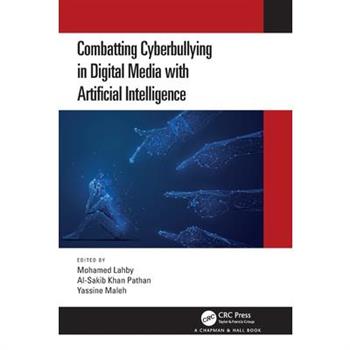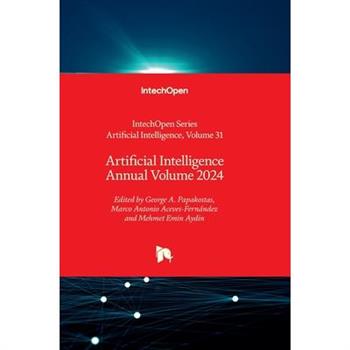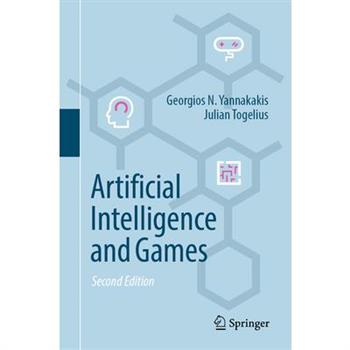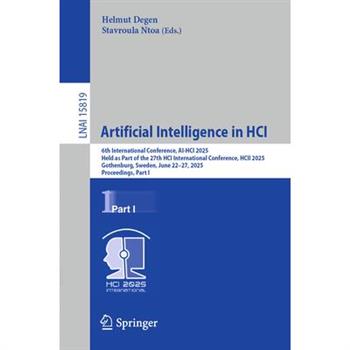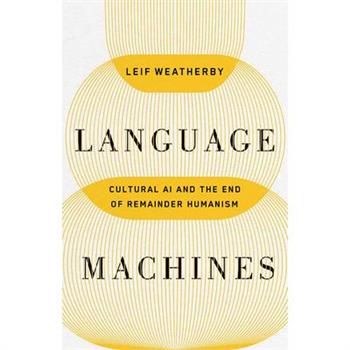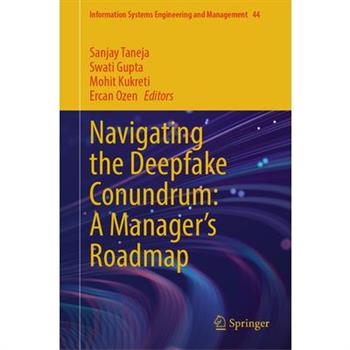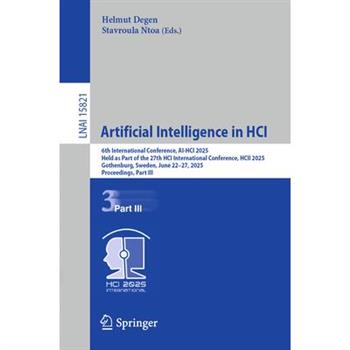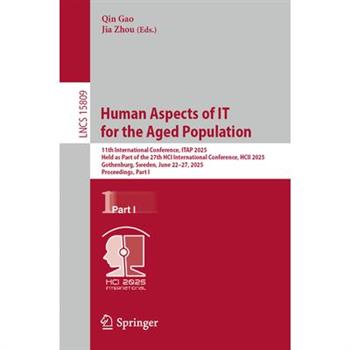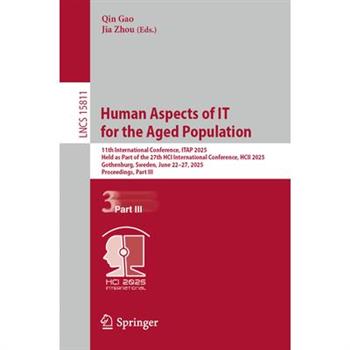Combatting Cyberbullying in Digital Media with Artificial Intelligence
Rapid advancements in mobile computing and communication technology and recent technological progress have opened up a plethora of opportunities. These advancements have expanded knowledge, facilitated global business, enhanced collaboration, and connected people through various digital media platforms. While these virtual platforms have provided new avenues for communication and self-expression, they also pose significant threats to our privacy. As a result, we must remain vigilant against the propagation of electronic violence through social networks. Cyberbullying has emerged as a particularly concerning form of online harassment and bullying, with instances of racism, terrorism, and various types of trolling becoming increasingly prevalent worldwide.Addressing the issue of cyberbullying to find effective solutions is a challenge for the web mining community, particularly within the realm of social media. In this context, artificial intelligence (AI) can serve as a valuable tool in combating the diverse manifestations of cyberbullying on the Internet and social networks. This book presents the latest cutting-edge research, theoretical methods, and novel applications in AI techniques to combat cyberbullying. Discussing new models, practical solutions, and technological advances related to detecting and analyzing cyberbullying is based on AI models and other related techniques. Furthermore, the book helps readers understand AI techniques to combat cyberbullying systematically and forthrightly, as well as future insights and the societal and technical aspects of natural language processing (NLP)-based cyberbullying research efforts.Key Features: Proposes new models, practical solutions and technological advances related to machine intelligence techniques for detecting cyberbullying across multiple social media platforms. Combines both theory and practice so that readers (beginners or experts) of this book can find both a description of the concepts and context related to the machine intelligence. Includes many case studies and applications of machine intelligence for combating cyberbullying.
Hci International 2025 Posters
The eight-volume set, CCIS 2522-2529, constitutes the extended abstracts of the posters presented during the 27th International Conference on Human-Computer Interaction, HCII 2025, held in Gothenburg, Sweden, during June 22-27, 2025. The total of 1430 papers and 355 posters included in the HCII 2025 proceedings were carefully reviewed and selected from 7972 submissions. The papers presented in these eight volumes are organized in the following topical sections: Part I: Virtual, Tangible and Intangible Interaction; HCI for Health. Part II: Perception, Cognition and Interaction; Communication, Information, Misinformation and Online Behavior; Designing and Understanding Learning and Teaching experiences. Part III: Design for All and Universal Access; Data, Knowledge, Collaboration, Research and Technological Innovation. Part IV: Human-Centered Security and Privacy; Older Adults and Technology; Interacting and driving. Part V: Interactive Technologies for wellbeing; Game Design; Child-Computer Interaction. Part VI: Designing and Understanding XR Cultural Experiences; Designing Sustainable (Smart) Human Environments. Part VII: Design, Creativity and AI; eCommerce, Fintech and Customer Behavior. Part VIII: Interacting with Digital Culture; Interacting with GenAI and LLMs.
Blockchain and Artificial Intelligence Technologies for Smart Energy Systems
Present energy systems are undergoing a radical transformation, driven by the urgent need to address the climate change crisis. At the same time, we are witnessing the sharp growth of energy data and a revolution of advanced technologies, with artificial intelligence (AI) and Blockchain emerging as two of the most transformative technologies of our time. The convergence of these two technologies has the potential to create a paradigm shift in the energy sector, enabling the development of smart energy systems that are more resilient, efficient, and sustainable.This book situates itself at the forefront of this paradigm shift, providing a timely and comprehensive guide to AI and Blockchain technologies in the energy system. Moving from an introduction to the basic concepts of smart energy systems, this book proceeds to examine the key challenges facing the energy system, and how AI and Blockchain can be used to address these challenges. Research examples are presented to showcase the role and impact of these new technologies, while the latest developed testbeds are summarised and explained to help researchers accelerate their development of these technologies.This book is an indispensable guide to the current changes in the energy system, being of particular use to industry professionals, from researchers to management, looking to stay ahead of technological developments.
Generative AI Unleashed
Today's generative AI has been marked by the advent of neural networks, inspired by the human brain, which are trained to recognize patterns in a dataset. Once the network is trained, it can make decisions or predictions without being programmed to perform tasks. Generative AI learns from a set of data without explicit instructions and can create and generate new digital content such as text, audio and art. Recent models are beginning to overcome challenges such as computational power, data quality and training stability. This edited book on generative AI presents novel perspectives, approaches and methodologies, as well as security, ethical and legal considerations, and future trends. Topics and technologies covered include generative transformers and text generation models, generative models for human-like speech synthesis, generative AI for image synthesis, data synthesis for privacy protection, and exploration of the impact of generative AI in fields including industry 4.0, astronomy, and brain tumour detection. Two chapters offer perspectives on ethics and legality. Generative AI Unleashed: Advancements, transformative applications and future frontiers will serve as a valuable resource for researchers, engineers, advanced students and lecturers operating in the domains that are significantly impacted by generative AI.
Design, User Experience, and Usability
This six-volume set LNCS 15794-15799 constitutes the refereed proceedings of the 14th International Conference on Design, User Experience, and Usability, DUXU 2025, held as part of the 27th International Conference on Human-Computer Interaction, HCII 2025, in Gothenburg, Sweden, during June 22-27, 2025. The total of 1430 papers and 355 posters included in the HCII 2025 proceedings was carefully reviewed and selected from 7972 submissions.The six volumes cover the following topics: Part I: Information design and visualization; emotional interaction and persuasive design; and interactive systems and user behavior.Part II: UX design and evaluation methodologies; inclusive design and accessible experiences; and product and industrial design.Part III: Design and the digital transmission of culture; design for arts and creativity; and designing for health and therapeutic experiences.Part IV: Consumer experience and service design; design and evaluation of technology-enhanced learning; and UX in automotive and transportation.Part V: Design education and professional practice; and human-centered design and interactive experiences.Part VI: AI and the future of UX design; and UX in AI and emerging technologies.
Smart VR/AR/MR Systems for Professionals
This book is a comprehensive guide that explores the ground-breaking applications of virtual reality (VR), augmented reality (AR), and mixed reality (MR) in various industries. This book aims to equip practicing professionals with the knowledge to harness the full potential of these immersive technologies.
Hidden Networks
In an era of invisible coordination and AI-enhanced movements, Hidden Networks reveals the breakthrough analytical tools you need to understand the systems shaping our world.From financial markets and healthcare systems to terrorist cells and online communities, modern networks operate with staggering complexity, resisting traditional analysis and obscuring their true objectives. Hidden Networks equips analysts, data scientists, strategists, and intelligence professionals with a revolutionary methodology to detect, decode, and influence these systems.Drawing on advancements in machine learning, network science, behavioral fingerprinting, and game theory, Dr. Horen Kuecuekyan introduces a practical, cross-disciplinary framework to model multi-agent systems. You'll learn to identify subgroups, visualize their interactions, map information flows, and simulate how agents adapt in dynamic environments.This book is more than theory-it delivers actionable insights. Readers will gain tools to analyze decentralized coordination, spot covert patterns of influence, and leverage temporal network analytics to track evolving threats and opportunities. If you're working with complex systems-from public policy to private sector intelligence-this guide transforms overwhelming data into meaningful foresight.Inside, you'll explore: Hierarchical modeling of complex systems and subgroup analysisTemporal graph neural networks and AI-enhanced detection of coordinated behaviorAgent-based modeling, game-theoretic simulation, and emergent behavior analysisFederated learning and synthetic data augmentation for secure and scalable analyticsBehavioral fingerprinting using unsupervised machine learningEthical frameworks for responsible use of powerful analytical methodsWith detailed case studies on financial regulation, healthcare coordination, criminal networks, and transformation programs, Hidden Networks bridges the gap between high-level systems theory and operational practice.Whether you're analyzing influence operations, optimizing distributed systems, or predicting group behavior in volatile environments, this book delivers a robust, future-ready toolkit. You'll walk away with a comprehensive understanding of how to model and interpret the collective behavior of independent actors-and why that matters more than ever in the 21st century.
What AI Can Do
The philosopher Spinoza once asserted that no one knows what a body can do, conceiving an intrinsic bodily power with unknown limits. Similarly, we can ask ourselves about Artificial Intelligence (AI): To what extent is the development of intelligence limited by its technical and material substrate? In other words, what can AI do? The answer is analogous to Spinoza's: Nobody knows the limit of AI. Critically considering this issue from philosophical, interdisciplinary, and engineering perspectives, respectively, this book assesses the scope and pertinence of AI technology and explores how it could bring about both a better and more unpredictable future. What AI Can Do highlights, at both the theoretical and practical levels, the cross-cutting relevance that AI is having on society, appealing to students of engineering, computer science, and philosophy, as well as all who hold a practical interest in the technology.
Artificial Intelligence Annual Volume 2024
The academic interest in artificial intelligence (AI) has grown exponentially in recent years. The rapid development of AI technologies and the interdisciplinary nature of research in AI and its applications have contributed considerably to the global popularity of this research field. This volume deals with three key areas of the advancements in AI: machine learning and data mining, computer vision, and multi-agent systems. The increasing availability of vast data sets and powerful computing resources has enabled the development of more complex algorithms and models to address real-world challenges. In addition, deep learning has revolutionized the field of artificial intelligence, with computer vision being at the forefront of innovations. Multi-agent systems (MAS) have also proven to be the best fitting state-of-the-art within the AI framework for raising distributed AI technologies and applications such as smart cities and the Internet of (every)thing(s). Extended with machine learning, MAS have become very popular for researchers in every field, especially in autonomous vehicular technologies. This book should serve as a valuable resource not just to scientists dealing with AI research but also to anyone interested in its broad application areas across various disciplines.
Analysis of suitable generative algorithms for the generation of safety-critical driving data in the field of autonomous driving
Approximately 3700 people die in traffic accidents each day. The most frequent cause of accidents is human error. Autonomous driving can significantly reduce the number of traffic accidents. To prepare autonomous vehicles for road traffic, the software and system components must be thoroughly validated and tested. However, due to their criticality, there is only a limited amount of data for safety-critical driving scenarios. Such driving scenarios can be represented in the form of time series. These represent the corresponding kinematic vehicle movements by including vectors of time, position coordinates, velocities, and accelerations. There are several ways to provide such data. For example, this can be done in the form of a kinematic model. Alternatively, methods of artificial intelligence or machine learning can be used. These are already being widely used in the development of autonomous vehicles. For example, generative algorithms can be used to generate safety-critical driving data. A novel taxonomy for the generation of time series and suitable generative algorithms will be described in this paper. In addition, a generative algorithm will be recommended and used to demonstrate the generation of time series associated with a typical example of a driving-critical scenario.
Advanced Machine Learning for Cyber-Attack Detection in Iot Networks
Advanced Machine Learning for Cyber-Attack Detection in IoT Networks analyzes diverse machine learning techniques, including supervised, unsupervised, reinforcement, and deep learning, along with their applications in detecting and preventing cyberattacks in future IoT systems. Chapters investigate the key challenges and vulnerabilities found in IoT security, how to handle challenges in data collection and pre-processing specific to IoT environments, as well as what metrics to consider for evaluating the performance of machine learning models. Other sections look at the training, validation, and evaluation of supervised learning models and present case studies and examples that demonstrate the application of supervised learning in IoT security.
Artificial Intelligence and Games
Book content class- and industry-tested by leading academic lecturers, researchers and game developersHot topic in game development and academic game researchSuitable for undergraduate and graduate courses in games, artificial intelligence, design, human-computer interaction, and computational intelligence
Hci in Games
This book constitutes the refereed proceedings of the 7th International Conference on HCI in Games, held as part of the 27th International Conference, HCI International 2025, which took place in Gothenburg, Sweden, during June 22-27, 2025. The total of 1430 papers and 355 posters included in the HCII 2025 proceedings was carefully reviewed and selected from thousands of submissions. The HCI-Games 2025 proceedings was organized in the following topical sections: Part 1: Gamification, UX, and Player BehaviorPart 2: Identity, Emotion, and AI in Game ExperiencesPart 3: Gamified Learning and DesignPart 4: Games in Healthcare and Wellbeing
Applied TinyML
DESCRIPTION AI is useful when it runs in large machines in data centers, but only when it makes it down to stand-alone edge devices will it unlock countless new use cases and applications. TinyML is transforming AI by bringing ML capabilities to small, low-power devices at the very edge of the network.This book will guide you through building these smart devices. It establishes TinyML's core foundations and a methodology for application development, from problem definition to power management and cost analysis. You will explore practical skills applications, learning sound, movement, and image classification, followed by advanced techniques like object tracking and sensor fusion, using methods such as Kalman filters. You will explore deep learning regression for predictive tasks and essential anomaly detection for identifying unusual patterns, all demonstrated through real-world use cases.After reading this book, you will be fully equipped to design, build, and deploy complete TinyML systems, from data collection and feature extraction to model training, deployment, and hardware integration. You will gain hands-on skills and the practical engineering knowledge needed to bring intelligent low-power devices to life.WHAT YOU WILL LEARN● Build smart gadgets that recognize sounds and movements.● Learn skills beyond coding to create TinyML systems.● Design, build, and deploy TinyML applications.● Design smart systems that can learn on their own.● Make devices that understand and classify images.● See how AI and ML fit into the real-world.WHO THIS BOOK IS FORThis book is for engineers, developers, and AI enthusiasts eager to build intelligent edge devices. No prior deep expertise in AI or electronics is required; it is perfect for anyone starting their journey in creating smart widgets with TinyML.
Information-Measuring Systems
This book concentrates on virtual IMS with the use of modern information and measurement modeling technologies. Modern IMS can be implemented as: real hardware and software measuring tools; virtual IMS with the use of modern information and measurement modeling technologies, including simulation, mathematical, physical, with extensive use of computer equipment for conducting a simulation measurement experiment. Compared to real ones, virtual IMS has a number of advantages, and their implementation requires less time, production, and financial costs. However, in a number of cases, due to the information uncertainty of the object of measurement, such IMS cannot provide objective and reliable results, and therefore, it is necessary to conduct a full-scale measurement experiment using real systems. The potential capabilities of modern systems at the stage of information development of society have increased significantly, which contributes both to the expansion of the subject areas of their application and their use to increase the efficiency of known and solve new scientific and applied measurement tasks. The authors are in solidarity with other colleagues--specialists in measurements--in the forecasts of the development of IMS. No improvements in measurement information technologies, including computer and intellectual ones, have not led, are not leading, and obviously cannot lead in future to the expansion of the nomenclature of measurements of quantities while there are no corresponding sensors that form primary information during their direct interaction with the research object. Further development of IMS and their use in various fields of science and technology, including quantum metrology and nanotechnology, will largely be determined by the development of new principles of operation and the creation of new types of sensors based on them.
Digital Human Modeling and Applications in Health, Safety, Ergonomics and Risk Management
This three-volume set LNCS 15791-15793 constitutes the refereed proceedings of the 16th International Conference on Digital Human Modeling and Applications in Health, Safety, Ergonomics and Risk Management, DHM 2025, held as part of the 27th International Conference on Human-Computer Interaction, HCII 2025, in Gothenburg, Sweden, during June 22-27, 2025.The total of 1430 papers and 355 posters included in the HCII 2025 proceedings was carefully reviewed and selected from 7972 submissions.The three volumes cover the following topics: Part I: Digital human modeling for healthcare and wellbeing; AI and digital human modeling in safety and risk management; and biomechanics, ergonomics, and risk mitigation.Part II: User experience design for sustainable products and public spaces; and wearable and digital health monitoring.Part III: Healthcare and rehabilitation innovation; augmented and virtual reality for health, wellbeing, and digital human modeling; and behavioral modeling and human-technology interaction.
Hci in Mobility, Transport, and Automotive Systems
This book constitutes the refereed proceedings of the 7th International Conference on HCI in Mobility, Transport, and Automotive Systems, MobiTAS 2025, held as part of the 27th HCI International Conference, HCII 2025, which took place in Gothenburg, Sweden, during June 22-27, 2025. The total of 1430 papers and 355 posters included in the HCII 2025 proceedings was carefully reviewed and selected from 7972 submissions. The MobiTAS 2025 proceedings were organized in the following topical sections- Human-Autonomous Vehicle Interaction and User Experience; User Interfaces and Interaction Methods for Mobility; Trust, Transparency, and Comfort in Automated Driving; Pedestrian Interaction and Road Safety in Automated Mobility.
Artificial Intelligence in Hci
The four-volume set LNAI 15819-15822 constitutes the thoroughly refereed proceedings of the 6th International Conference on Artificial Intelligence in HCI, AI-HCI 2025, held as part of the 27th International Conference, HCI International 2025, which took place in Gothenburg, Sweden, June 22-17, 2025. The total of 1430 papers and 355 posters included in the HCII 2025 proceedings was carefully reviewed and selected from 7972 submissions. The papers have been organized in topical sections as follows: Part I: Trust and Explainability in Human-AI Interaction; User Perceptions, Acceptance, and Engagement with AI; UX and Socio-Technical Considerations in AI Part II: Bias Mitigation and Ethics in AI Systems; Human-AI Collaboration and Teaming; Chatbots and AI-Driven Conversational Agents; AI in Language Processing and Communication. Part III: Generative AI in HCI; Human-LLM Interactions and UX Considerations; Everyday AI: Enhancing Culture, Well-Being, and Urban Living. Part IV: AI-Driven Creativity: Applications and Challenges; AI in Industry, Automation, and Robotics; Human-Centered AI and Machine Learning Technologies.
Distributed, Ambient and Pervasive Interactions
This two-volume set LNCS 15802-15803 constitutes the refereed proceedings of the 13th International Conference on Distributed, Ambient and Pervasive Interactions, DAPI 2025, held as part of the 27th International Conference on Human-Computer Interaction, HCII 2025, in Gothenburg, Sweden, during June 22-27, 2025. The total of 1430 papers and 355 posters included in the HCII 2025 proceedings was carefully reviewed and selected from 7972 submissions.The two volumes cover the following topics: Part I: Designing and developing intelligent environments; and user experience in intelligent environments.Part II: Smart cities and public spaces; eXtended reality and robots in intelligent environments; and wellbeing in intelligent environments.
Virtual, Augmented and Mixed Reality
This three-volume set, LNCS 15788-15790, constitutes the refereed proceedings of the 17th International Conference on Virtual, Augmented and Mixed Reality, VAMR 2025, held as part of the 27th International Conference on Human-Computer Interaction, HCII 2025, in Gothenburg, Sweden, during June 22-27, 2025. The total of 1430 papers and 355 posters included in the HCII 2025 proceedings were carefully reviewed and selected from 7972 submissions. The papers presented in these three volumes are organized in the following topical sections:: Part I: Designing and Developing Virtual Environments; UX in Virtual Environments Part II: VR, Culture, Art and Entertainment; Social Interaction and Wellbeing in Virtual Environments Part III: VR Games; Virtual Environments for Learning, Training and Professional Development; Multimodal Interaction in Virtual Environments
Design, User Experience, and Usability
This six-volume set LNCS 15794-15799 constitutes the refereed proceedings of the 14th International Conference on Design, User Experience, and Usability, DUXU 2025, held as part of the 27th International Conference on Human-Computer Interaction, HCII 2025, in Gothenburg, Sweden, during June 22-27, 2025. The total of 1430 papers and 355 posters included in the HCII 2025 proceedings was carefully reviewed and selected from 7972 submissions.The six volumes cover the following topics: Part I: Information design and visualization; emotional interaction and persuasive design; and interactive systems and user behavior.Part II: UX design and evaluation methodologies; inclusive design and accessible experiences; and product and industrial design.Part III: Design and the digital transmission of culture; design for arts and creativity; and designing for health and therapeutic experiences.Part IV: Consumer experience and service design; design and evaluation of technology-enhanced learning; and UX in automotive and transportation.Part V: Design education and professional practice; and human-centered design and interactive experiences.Part VI: AI and the future of UX design; and UX in AI and emerging technologies.
Local Solutions for Global Challenges
The two-volume proceedings set LNCS 15703 and 15704 constitutes the refereed proceedings of the 20th International Conference on Local Solutions for Global Challenges, DESRIST 2025, which was held in Montego Bay, Jamaica, during June 2-4, 2025. The 36 full and 2 short papers presented in this book were carefully reviewed and selected from 111 submissions. The papers presented in these volumes are organized into the following topical sections: - Part I: Emerging DSR Methods and Novel DSR Applications; Data-Driven Design Science; DSR Education; Healthcare Systems, Ageing and Wellbeing Part II: Responsible Artificial Intelligence Design; Cybersecurity, Privacy, and Ethics; Innovation and Entrepreneurship; Sustainable Development and Environmental Solutions
Local Solutions for Global Challenges
The two-volume proceedings set LNCS 15703 and 15704 constitutes the refereed proceedings of the 20th International Conference on Local Solutions for Global Challenges, DESRIST 2025, which was held in Montego Bay, Jamaica, during June 2-4, 2025. The 36 full and 2 short papers presented in this book were carefully reviewed and selected from 111 submissions. The papers presented in these volumes are organized into the following topical sections: - Part I: Emerging DSR Methods and Novel DSR Applications; Data-Driven Design Science; DSR Education; Healthcare Systems, Ageing and Wellbeing Part II: Responsible Artificial Intelligence Design; Cybersecurity, Privacy, and Ethics; Innovation and Entrepreneurship; Sustainable Development and Environmental Solutions
Cross-Cultural Design
This four-volume set LNCS 15782-15785 constitutes the refereed proceedings of the 17th International Conference on Cross-Cultural Design, CCD 2025, held as part of the 27th International Conference on Human-Computer Interaction, HCII 2025, in Gothenburg, Sweden, during June 22-27, 2025.The total of 1430 papers and 355 posters included in the HCII 2025 proceedings was carefully reviewed and selected from 7972 submissions.The four volumes cover the following topics: Part I: Cross-cultural user experience and design; cross-cultural emotional and psychological factors in interaction; and cross-cultural usability and interaction design.Part II: Artificial intelligence in cultural heritage and creativity; cross-cultural generative AI; and AI applications and sustainable innovation.Part III: Cross-cultural arts and aesthetics; cross-cultural social innovation; automotive and transportation user experience; and cross-cultural design and cultural heritage.Part IV: Digital learning, STEM education and AI-driven pedagogy; smart systems, intelligent interaction and user perception; and cross-cultural health and wellbeing.
Design, User Experience, and Usability
This six-volume set LNCS 15794-15799 constitutes the refereed proceedings of the 14th International Conference on Design, User Experience, and Usability, DUXU 2025, held as part of the 27th International Conference on Human-Computer Interaction, HCII 2025, in Gothenburg, Sweden, during June 22-27, 2025. The total of 1430 papers and 355 posters included in the HCII 2025 proceedings was carefully reviewed and selected from 7972 submissions.The six volumes cover the following topics: Part I: Information design and visualization; emotional interaction and persuasive design; and interactive systems and user behavior.Part II: UX design and evaluation methodologies; inclusive design and accessible experiences; and product and industrial design.Part III: Design and the digital transmission of culture; design for arts and creativity; and designing for health and therapeutic experiences.Part IV: Consumer experience and service design; design and evaluation of technology-enhanced learning; and UX in automotive and transportation.Part V: Design education and professional practice; and human-centered design and interactive experiences.Part VI: AI and the future of UX design; and UX in AI and emerging technologies.
Psyche & Silicon - The interplay of artificial intelligence & human psychology
In a world increasingly shaped by algorithms, Psyche & Silicon explores the profound and often overlooked relationship between the human mind and artificial intelligence. Blending cutting-edge research with compelling insights, this book delves into how psychological principles shape AI design-and how, in turn, intelligent machines are reshaping the way we think, feel, and behave.From the biases embedded in neural networks to the emotional responses we project onto machines, Psyche & Silicon uncovers the psychological underpinnings of our interactions with technology. It asks urgent questions: Can machines understand emotion, or merely simulate it? How do cognitive shortcuts in the human brain influence AI decision-making systems? And what does it mean to trust-or fear-a machine?Ideal for psychologists, technologists, ethicists, and curious minds alike, this book is a timely guide to the symbiotic evolution of minds both biological and artificial. At the crossroads of human nature and digital intelligence, Psyche & Silicon offers a thought-provoking journey into the future of consciousness and cognition.
Human-Centered Design, Operation and Evaluation of Mobile Communications
This book constitutes the refereed proceedings of the 6th International Conference on Design, Operation and Evaluation of Mobile Communications, MOBILE 2025, held as part of the 27th International Conference, HCI International 2025, which was held in Gothenburg, Sweden, during June 22-27, 2025. The total of 1430 papers and 355 posters included in the HCII 2025 proceedings was carefully reviewed and selected from 7972 submissions. The MOBILE 2025 proceedings were organized in the following topical sections- Mobile Usability, Experience and Personalization; Mobile Health, Inclusivity and Well-Being; Mobile Security, Protection and Risk Assessment; and, Mobile Applications for Culture, and Social Engagement.
Adaptive Instructional Systems
The two-volume set LNCS 15812-15813 constitutes the thoroughly refereed proceedings of the 7th International Conference on Adaptive Instructional Systems, AIS 2025, held as part of the 27th HCI International Conference on Human-Computer Interaction, HCII 2025, which took place in Gothenburg, Sweden, in June 2025. The total of 1430 papers and 355 posters included in the HCII 2025 proceedings was carefully reviewed and selected from 7972 submissions. The two volumes cover topics as follows: Part I: Adaptive Training and Education; Cognitive Modeling of Adaptive Instructional Systems; Part II: Adaptive and Personalized Learning; Emerging Technologies in Adaptive Instruction.
Augmented Cognition
The two volume set LNAI 15778 and LNAI 15779 constitutes the refereed proceedings of the 19th International Conference on Augmented Cognition, AC 2025, held as part of the 27th HCI International Conference, HCII 2025, which took place in Gothenburg, Sweden, June 22-27, 2025. The total of 1430 papers and 355 posters included in the HCII 2025 proceedings was carefully reviewed and selected from 7972 submissions. The papers have been organized in topical sections as follows: Part I: Neurotechnology and eye tracking in augmented cognition; augmented cognitiona dn user experience; Part II: Emotions in augmented cognition; enhancing learning and memory.
Human-Centered Design, Operation and Evaluation of Mobile Communications
This book constitutes the refereed proceedings of the 6th International Conference on Design, Operation and Evaluation of Mobile Communications, MOBILE 2025, held as part of the 27th International Conference, HCI International 2025, which was held in Gothenburg, Sweden, during June 22-27, 2025. The total of 1430 papers and 355 posters included in the HCII 2025 proceedings was carefully reviewed and selected from 7972 submissions. The MOBILE 2025 proceedings were organized in the following topical sections- Mobile Usability, Experience and Personalization; Mobile Health, Inclusivity and Well-Being; Mobile Security, Protection and Risk Assessment; and, Mobile Applications for Culture, and Social Engagement.
Artificial Intelligence in Hci
The four-volume set LNAI 15819-15822 constitutes the thoroughly refereed proceedings of the 6th International Conference on Artificial Intelligence in HCI, AI-HCI 2025, held as part of the 27th International Conference, HCI International 2025, which took place in Gothenburg, Sweden, June 22-17, 2025. The total of 1430 papers and 355 posters included in the HCII 2025 proceedings was carefully reviewed and selected from 7972 submissions. The papers have been organized in topical sections as follows: Part I: Trust and Explainability in Human-AI Interaction; User Perceptions, Acceptance, and Engagement with AI; UX and Socio-Technical Considerations in AI Part II: Bias Mitigation and Ethics in AI Systems; Human-AI Collaboration and Teaming; Chatbots and AI-Driven Conversational Agents; AI in Language Processing and Communication. Part III: Generative AI in HCI; Human-LLM Interactions and UX Considerations; Everyday AI: Enhancing Culture, Well-Being, and Urban Living. Part IV: AI-Driven Creativity: Applications and Challenges; AI in Industry, Automation, and Robotics; Human-Centered AI and Machine Learning Technologies.
Computer Vision - Eccv 2024 Workshops
The multi-volume set LNCS 15623 until LNCS 15646 constitutes the proceedings of the workshops that were held in conjunction with the 18th European Conference on Computer Vision, ECCV 2024, which took place in Milan, Italy, during September 29-October 4, 2024. These LNCS volumes contain 574 accepted papers from 53 of the 73 workshops. The list of workshops and distribution of the workshop papers in the LNCS volumes can be found in the preface that is freely accessible online.
Language Machines
How generative AI systems capture a core function of language Looking at the emergence of generative AI, Language Machines presents a new theory of meaning in language and computation, arguing that humanistic scholarship misconstrues how large language models (LLMs) function. Seeing LLMs as a convergence of computation and language, Leif Weatherby contends that AI does not simulate cognition, as widely believed, but rather creates culture. This evolution in language, he finds, is one that we are ill-prepared to evaluate, as what he terms "remainder humanism" counterproductively divides the human from the machine without drawing on established theories of representation that include both. To determine the consequences of using AI for language generation, Weatherby reads linguistic theory in conjunction with the algorithmic architecture of LLMs. He finds that generative AI captures the ways in which language is at first complex, cultural, and poetic, and only later referential, functional, and cognitive. This process is the semiotic hinge on which an emergent AI culture depends. Weatherby calls for a "general poetics" of computational cultural forms under the formal conditions of the algorithmic reproducibility of language. Locating the output of LLMs on a spectrum from poetry to ideology, Language Machines concludes that literary theory must be the backbone of a new rhetorical training for our linguistic-computational culture.
Engineering Interactive Computer Systems. Eics 2024 International Workshops
This book presents a series of revised papers selected from the Workshops organized in conjunction with the 16th ACM SIGCHI Symposium on Engineering Interactive Computing Systems (EICS 2024) which was held in Cagliari, Italy, during June 24-26, 2024. The 18 full papers included in this book were carefully reviewed and selected from 22 submissions. They were organized in topical sections as follows: Engineering Interactive Systems Embedding AI Technologies (EISEAIT 2024 Workshop); and Experience 2.0 and Beyond - Engineering Cross Devices and Multiple Realities (EXDMR 2024).
Intelligent Human Computer Interaction
This volume LNCS 15557 constitutes the refereed proceedings of 16th International Conference on Intelligent Human Computer Interaction, IHCI 2024, held in Twente, The Netherlands, during November 13-16, 2024. The 37 full papers and 2 short papers were carefully reviewed and selected from 107 submissions. They were categorized under the topical sections as follows: Learning in healthcare and wellbeing Robots and conversation agents Physical world and Posters Human factors Algorithims and computer vision Human factors in cybersecurity
Artificial Intelligence in Hci
The four-volume set LNAI 15819-15822 constitutes the thoroughly refereed proceedings of the 6th International Conference on Artificial Intelligence in HCI, AI-HCI 2025, held as part of the 27th International Conference, HCI International 2025, which took place in Gothenburg, Sweden, June 22-17, 2025. The total of 1430 papers and 355 posters included in the HCII 2025 proceedings was carefully reviewed and selected from 7972 submissions. The papers have been organized in topical sections as follows: Part I: Trust and Explainability in Human-AI Interaction; User Perceptions, Acceptance, and Engagement with AI; UX and Socio-Technical Considerations in AI Part II: Bias Mitigation and Ethics in AI Systems; Human-AI Collaboration and Teaming; Chatbots and AI-Driven Conversational Agents; AI in Language Processing and Communication. Part III: Generative AI in HCI; Human-LLM Interactions and UX Considerations; Everyday AI: Enhancing Culture, Well-Being, and Urban Living. Part IV: AI-Driven Creativity: Applications and Challenges; AI in Industry, Automation, and Robotics; Human-Centered AI and Machine Learning Technologies.
Augmented Cognition
The two volume set LNAI 15778 and LNAI 15779 constitutes the refereed proceedings of the 19th International Conference on Augmented Cognition, AC 2025, held as part of the 27th HCI International Conference, HCII 2025, which took place in Gothenburg, Sweden, June 22-27, 2025. The total of 1430 papers and 355 posters included in the HCII 2025 proceedings was carefully reviewed and selected from 7972 submissions. The papers have been organized in topical sections as follows: Part I: Neurotechnology and eye tracking in augmented cognition; augmented cognitiona dn user experience; Part II: Emotions in augmented cognition; enhancing learning and memory.
Human Aspects of It for the Aged Population
The three-volume set LNCS 15809-15811 constitutes the thoroughly refereed proceedings of the 11th International Conference on Human Aspects of IT for the Aged Population, ITAP 2025, held as part of the 27th HCI International Conference on Human-Computer Interaction, HCII 2025, which took place in Gothenburg, Sweden, in June 2025. The total of 1430 papers and 355 posters included in the HCII 2025 proceedings was carefully reviewed and selected from 7972 submissions. The three volumes cover topics as follows: Part I: Designing Older User Experiences; Social Connectedness and Psychological Support Part II: Smart Homes and Communities for Aging in Place; eHealth for Aging Part III: Older Adults and the (Smart) City; Technology Adoption, IT Literacy and the Digital Divide; Living with AI.
Human Aspects of It for the Aged Population
The three-volume set LNCS 15809-15811 constitutes the thoroughly refereed proceedings of the 11th International Conference on Human Aspects of IT for the Aged Population, ITAP 2025, held as part of the 27th HCI International Conference on Human-Computer Interaction, HCII 2025, which took place in Gothenburg, Sweden, in June 2025. The total of 1430 papers and 355 posters included in the HCII 2025 proceedings was carefully reviewed and selected from 7972 submissions. The three volumes cover topics as follows: Part I: Designing Older User Experiences; Social Connectedness and Psychological Support Part II: Smart Homes and Communities for Aging in Place; eHealth for Aging Part III: Older Adults and the (Smart) City; Technology Adoption, IT Literacy and the Digital Divide; Living with AI.
Human Aspects of It for the Aged Population
The three-volume set LNCS 15809-15811 constitutes the thoroughly refereed proceedings of the 11th International Conference on Human Aspects of IT for the Aged Population, ITAP 2025, held as part of the 27th HCI International Conference on Human-Computer Interaction, HCII 2025, which took place in Gothenburg, Sweden, in June 2025. The total of 1430 papers and 355 posters included in the HCII 2025 proceedings was carefully reviewed and selected from 7972 submissions. The three volumes cover topics as follows: Part I: Designing Older User Experiences; Social Connectedness and Psychological Support Part II: Smart Homes and Communities for Aging in Place; eHealth for Aging Part III: Older Adults and the (Smart) City; Technology Adoption, IT Literacy and the Digital Divide; Living with AI.
Unreal Engine Projects for Non-coders
Unreal Engine stands as a powerful real-time 3D creation tool, renowned across industries for its stunning visuals and versatile applications. It enables the creation of immersive and interactive experiences without requiring traditional coding skills.This book takes a practical, project-based approach. It begins with an introduction to Unreal Engine 5, offering a basic overview of its UI, tools and features, and core technologies. Each project focuses on specific areas and workflows, allowing the readers to get a basic grasp of the Unreal Engine's basic workflows, to a complete environment, built with custom assets, featuring a mini-game. The book covers topics such as Blueprints (Unreal Engine's node-based visual scripting), Nanite and Lumen technologies, Quixel Megascan, lighting and materials, a glimpse into the exciting world of VR development, covering base and high-poly modeling, texturing, level design principles, and implementing character interactions.By the end of this book, you will gain a strong practical foundation in Unreal Engine, capable of bringing your creative visions to life through compelling projects and possessing the skills to explore further into the realm of real-time 3D development.WHAT YOU WILL LEARN● Unreal Engine 5's basic UI, tools, and workflows.● Introduction to key UE5 tech, Nanite, and Lumen.● Plan model base/high-poly castle assets using external 3D software expertly.● Implement character movement and interactions using Blueprints visually and effectively.● Develop interactive elements, UI widgets, and mini-game mechanics via Blueprints.● Grasp VR basics within UE and apply to existing projects technically.WHO THIS BOOK IS FORThis book is intended for first-time Unreal Engine users who want to gain accelerated learning towards utilizing the engine and intermediate users who want to review or further expand their current knowledge of the Unreal Engine and its workflows. Overall, the book targets generalist developers who want to have a larger understanding of Unreal Engine's different workflows and simultaneously apply them to complete projects covering different fields of development.
DESIGN in METAVERSE
In a future digital landscape known as the Metaverse, individuals will be able to enter a shared, immersive online reality through advanced computing technologies. This virtual space will be inhabited by avatars-digital representations of users themselves and others-allowing people to interact, socialize, work, and play in a richly detailed environment. The Metaverse promises to transform the way we connect and experience the internet, moving far beyond traditional screens and interfaces.This emerging realm presents enormous potential for graphic design. As metaverse applications continue to develop and become increasingly realistic, the demand for innovative, intuitive, and visually engaging user interfaces (UI) and user experiences (UX) will grow substantially. Graphic designers will play a crucial role in shaping how users navigate and interact within these virtual worlds, crafting seamless and aesthetically pleasing designs that enhance engagement and accessibility.Furthermore, graphic artists will find new opportunities to express creativity and generate income by creating unique visual content tailored specifically for metaverse platforms. This includes designing avatars, virtual environments, digital assets, and interactive elements that contribute to the immersive experience. As the Metaverse evolves, it is likely to open up fresh avenues for artists and designers to monetize their work and influence a whole new digital frontier. This book explores these exciting possibilities and the future of graphic design in the Metaverse.
The Magic of Code
In the tradition of classics such as The Lives of a Cell, a bold reframing of our relationship with technology that argues code is "a universal force--swirling through disciplines, absorbing ideas, and connecting worlds" (Linda Liukas). In the digital world, code is the essential primary building block, the equivalent of the cell or DNA in the biological sphere--and almost as mysterious. Code can create entire worlds, real and virtual; it allows us to connect instantly to people and places around the globe; and it performs tasks that were once only possible in science fiction. It is a superpower, and not just in a technical sense. It is also a gateway to ideas. As vividly illustrated by Samuel Arbesman, it is the ultimate connector, providing new insight and meaning into how everything from language and mythology to biblical texts, biology, and even our patterns of thought connect with the history and nature of computing. While the building block of code can be used for many wondrous things it can also create deeper wedges in our society and be weaponized to cause damage to our planet or our civilization. Code and computing are too important to be left to the tech community; it is essential that each of us engage with it. And we fail to understand it to our detriment. By providing us with a framework to think about coding and its effects upon the world and placing the past, current, and future developments in computing into its broader setting we see how software and computers can work for people as opposed to against our needs. With this deeper understanding into the "why" of coding we can be masters of technology rather than its subjects.




